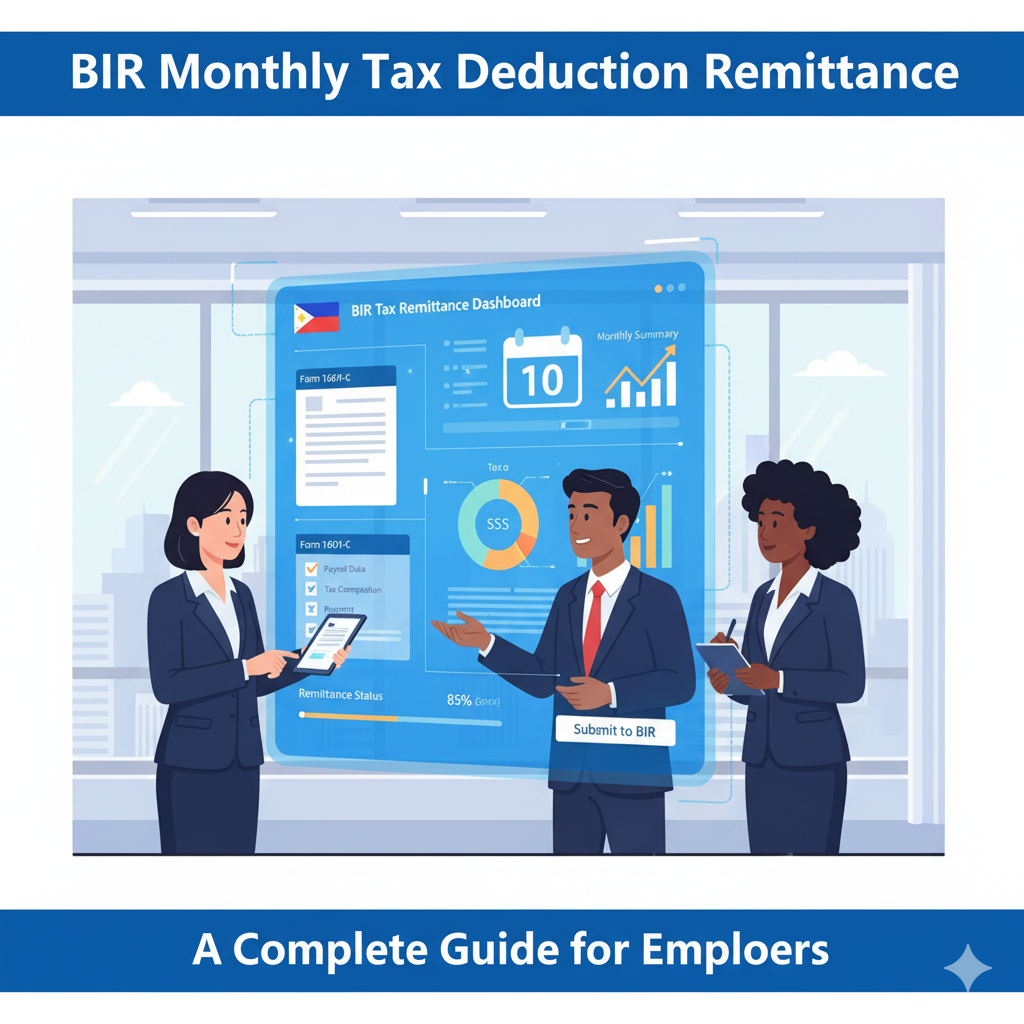Address
Kaypian, San Jose Del Monte City, Bulacan Philippines
Work Hours
Monday to Friday: 8AM - 6PM
Weekend: 10AM - 5PM
Address
Kaypian, San Jose Del Monte City, Bulacan Philippines
Work Hours
Monday to Friday: 8AM - 6PM
Weekend: 10AM - 5PM


Integrated HR. Accurate Payroll.


Integrated HR. Accurate Payroll.

In the Philippines, every employer has a legal responsibility to withhold and remit taxes from their employees’ salaries to the Bureau of Internal Revenue (BIR). This process, known as BIR monthly tax deduction remittance, ensures that employees’ income taxes are collected at the source — making tax compliance smooth and transparent.
But many HR and accounting professionals still find the monthly filing process confusing.
This article will walk you through how BIR monthly tax deduction remittance works, what forms to use, deadlines to remember, and common mistakes to avoid.
BIR monthly tax deduction remittance refers to the process where employers:
This system is guided by the “Pay-As-You-Earn (PAYE)” principle — meaning taxes are deducted every payroll period, not just once a year.
To stay compliant, you must use the correct forms depending on the nature of the withholding:
Timely filing is crucial to avoid penalties. Here’s a quick summary:
| Type of Withholding | Form | Deadline |
| Compensation (Employees) | 1601-C | On or before the 10th day of the following month |
| Expanded Withholding (Suppliers, Freelancers) | 0619-E | On or before the 10th day of the following month |
| Final Withholding | 0619-F | On or before the 10th day of the following month |
🕒 Example: For taxes withheld in October, file and remit on or before November 10.
If your company uses the eFPS (Electronic Filing and Payment System), the deadline may vary slightly depending on your assigned eFPS group.
Option 1: Using the BIR eFPS (Electronic Filing and Payment System)
Option 2: Using eBIRForms (For Non-eFPS Users)
To compute the correct tax to withhold each month, follow these steps:
🧮 Example:
Monthly salary: ₱35,000
Less contributions: ₱3,000
Taxable income: ₱32,000
Based on the BIR table, tax due ≈ ₱1,500–₱2,000 (depending on bracket)
Non-compliance with BIR deadlines can result in:
These penalties can easily add up, so it’s best to file early or automate your BIR remittances using payroll software.
Modern HRIS (Human Resource Information System) platforms can automatically compute, record, and even prepare BIR tax forms for submission.
Benefits include:
By digitizing your payroll and tax process, you ensure compliance while saving hours of manual work each month.
Filing your BIR monthly tax deduction remittance correctly is more than just a legal duty — it’s part of maintaining employee trust and corporate integrity.
By understanding the right forms, deadlines, and computation methods, and by leveraging digital tools, HR and finance teams can ensure smooth and error-free compliance every month.
Remember: Timely remittance today avoids penalties tomorrow.